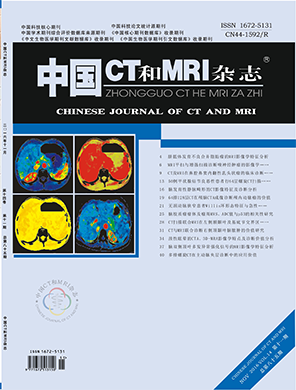Head and Neck Imaging
The Predictive Value of Quantification Parameters on MRI for Optional Treatment of the Prenatal Placenta Increta*
Author:LIN Jian-jun, ZHANG Wei, WANG Ying-fei, et al.
affiliation:Department of Radiology, The Maternal & Child Health Hospital of Guangxi , Nanning 530002, Guangxi, China
PDFAbstract
Objective To explore that the predictive value of quantification parameters on MRI for optional treatment of the prenatal placenta increta. Methods The prenatal MRI findings of 29 patients were retrospectively evaluated, which were surgically diagnosed as placenta increta. The Quantification Parameters included the placental implantation site, the largest length of the placenta implantation area (D1), the ratio of D1 and the maximum length of placenta (D2), the distance of T2-hypointense to the surface of myometrium (L1), the ratio of L1 and placenta thickness (L2), and the basic width of T2-hypointense, Which were analyzed by Fisher exact test, Independent T-test and receiver operating characteristics (ROC) curves to aim at whether to resect uterus. Results The placental implantation site (P=1.000) and the basic width of T2-hypointense (t=1.08, p=0.299) were statistically insignificant between hysterectomy or not, respectively. While D1 (t=4.44, P=0.001), D1/2 (t=6.04, P=0.000), L1 (t=5.05, P=0.000) and L1/2 (t=4.77, P=0.000) were statistically different between hysterectomy or not, respectively. When the Youden index reached the highest point, the optimal threshold of D1, D1/2, L1 and L1/2 values were 72.75mm, 0.205, 17.50mm and 0.409, the corresponding area under the ROC curve (AUC) were 0.922, 0.956, 0.944 and 0.917 respectively. Conclusion The results provided evidence that MRI may have certain value for optional treatment of the prenatal placenta increta
【Keyword】Placenta Increta; Hysterectomy; Treatment
【Chart number】R445.2;R714
【Document Identification Number】A
【DOI】 10.3969/j.issn.1672- 5131.2016.11.035
Chinese journal of CT and MRI
th14Volume, th 11 Issue
2016Year11Month

Related articles